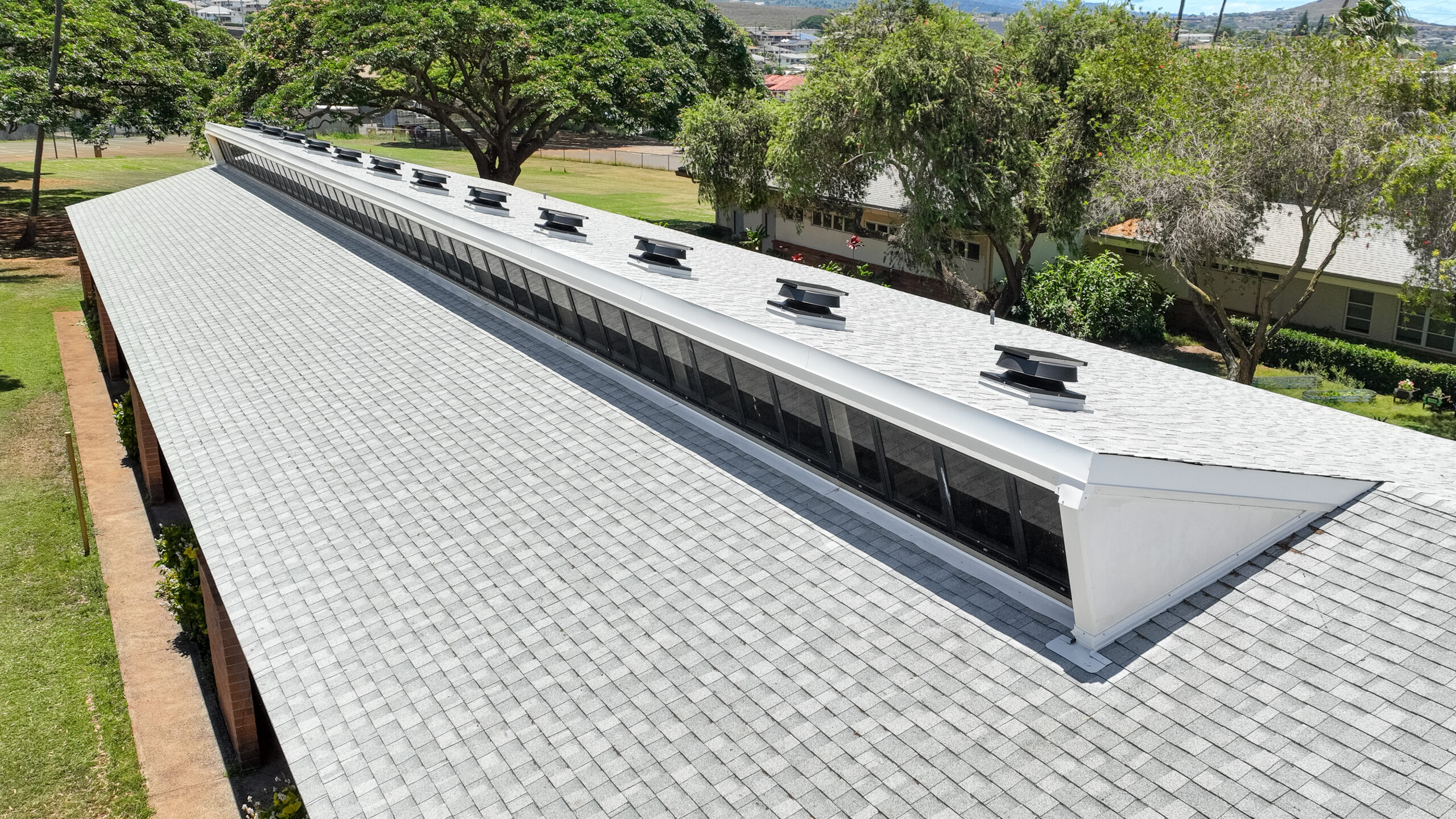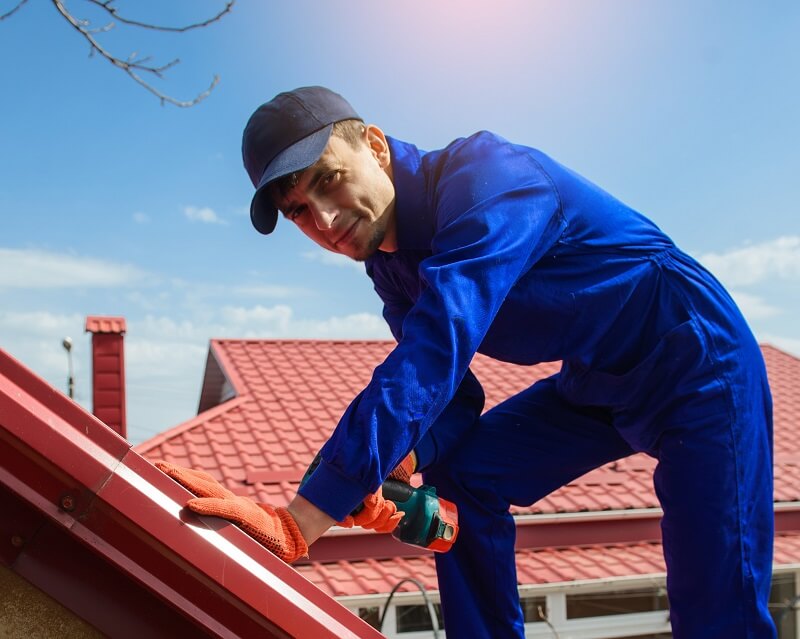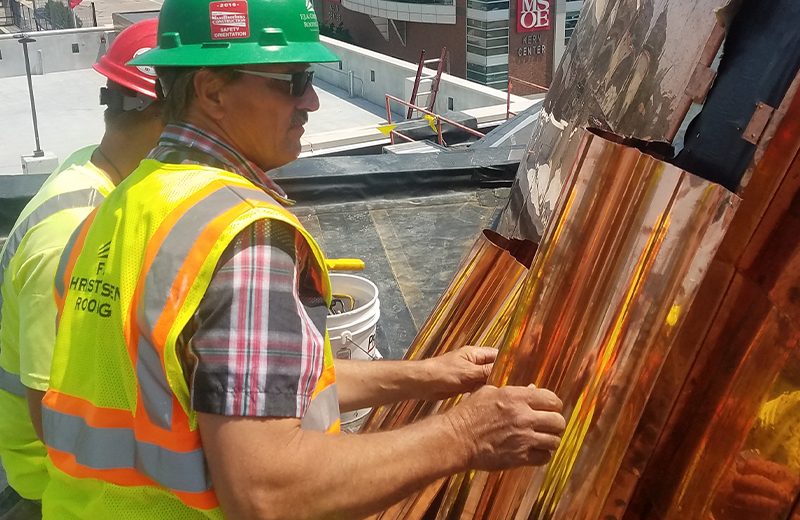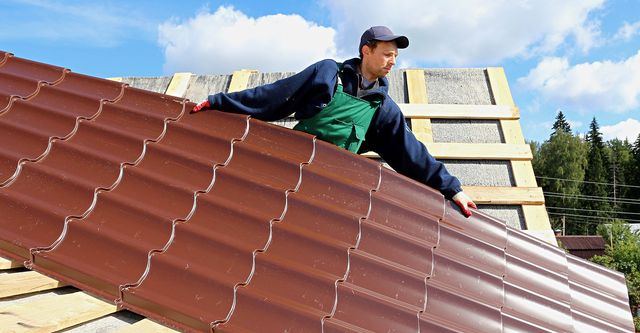Typical Repairs in Roof Covering That Every Homeowner Ought To Understand
As a house owner, it's important to identify usual roof covering concerns that can result in significant troubles down the line. Roof covering leakages, roof shingles damages, and blocked rain gutters can all jeopardize your home's honesty. Overlooking these repair services could cost you a lot more in the future. Recognizing how to attend to these problems can conserve you money and time. What steps can you take to ensure your roofing remains in leading problem?
Determining Roofing Leaks
Just how do you recognize if your roof is dripping? Beginning by checking your ceilings and wall surfaces for water stains or discoloration. That's a red flag if you discover dark places or peeling paint. Next off, check your attic room. Seek moist insulation or water droplets on beam of lights, which can show a leakage. During rainfall, scan and get hold of a flashlight for any kind of signs of wetness. Focus on the roofing system's incline and valleys, as these locations commonly collect water.
Don't neglect to analyze your roof from the outside. Search for missing or fractured roof shingles, as they can develop entry points for water. In addition, check flashing around vents and smokeshafts; harmed flashing can lead to leaks. If you believe a leakage, it's crucial to act quickly. Overlooking the problem can bring about more serious damages and expensive fixings down the line. If you see any type of warning signs., Count on your reactions and check out better.
Roof Shingles Damage and Substitute
When it involves roofing, roof shingles damages can bring about larger concerns otherwise resolved immediately. You'll intend to identify the various kinds of damage and recognize the actions for changing your roof shingles. Let's explore what you require to do to maintain your roofing system in top form.
Types of Roof Shingles Damages
Although shingles are developed to endure the aspects, different types of damage can endanger their integrity gradually. One usual issue is crinkling, where the edges or corners of the tiles raise, commonly due to age or incorrect installment. Breaking can likewise happen, usually from severe temperature level variations or influence. Missing tiles are another worry; high winds or falling particles can easily remove them. In addition, you could discover granule loss, where the safety granules deteriorate, subjecting the underlying material to UV rays and wetness. Algae development can establish, resulting in unattractive streaks and possible deterioration. Knowing these sorts of shingle damage enables you to address problems promptly and keep your roof's condition.
Replacement Process Steps
Replacing harmed tiles entails an organized approach to assure your roof covering remains resilient and protective. Start by identifying the harmed roof shingles-- look for cracks, crinkling, or missing items (oahu roofing). Once you have actually determined the trouble areas, gather your materials: brand-new tiles, roof nails, and a hammer
Next, very carefully eliminate the harmed tiles, making certain not to disturb the surrounding ones. Afterwards, glide the new roof shingles right into area, making particular they align effectively with the existing roof shingles. Secure them with nails, and seal any kind of revealed areas with roofing adhesive to stop leaks. Lastly, check your work to identify every little thing's tight and protected. With these actions, you can recover your roof covering's integrity and extend its lifespan.
Clogged Gutters and Downspouts
When particles builds up, it prevents water from moving away from your roof and structure. This can cause water to swimming pool on your roofing, enhancing the threat of leakages and damages to your shingles.

Remember, maintaining clear rain gutters is necessary for safeguarding your home's roofing and general stability. Routine checks will certainly save you cash and hassle down the line, guaranteeing your roof covering system functions properly.
Blinking Concerns
When it involves your roofing, blinking plays an important role in protecting against leakages. You ought to recognize the different sorts of flashing products and the usual issues that can occur. Knowing just how to fix these issues can conserve you time and money down the line.
Types of Flashing Products
Light weight aluminum blinking is lightweight, rust-resistant, and easy to mount, making it preferred for several roofs. If you're looking for adaptability, rubberized flashing can adjust to various roof covering forms, supplying strong seals. Selecting the appropriate blinking material can substantially improve your roofing's long life and effectiveness, so be certain to weigh your options carefully.
Typical Flashing Problems
Even the ideal flashing can run into issues over time, leading to possible leakages and damages. If the blinking isn't fitted well versus the roofing system, water can permeate below, causing rot and mold. An additional issue is rust, specifically with metal flashing, which can weaken over time due to exposure to the aspects.
Flashing Repair Strategies
Addressing flashing problems immediately can avoid further damage to your roofing system. For even more substantial damages, take into consideration changing the blinking completely. Get rid of the old blinking, ensuring the area is clean, and then mount the new blinking, protecting it with nails and applying sealer.
Air Flow Issues
When your roofing does not have correct air flow, it can bring about a host of troubles that endanger its honesty and your home's convenience. Poor air flow catches heat and moisture in your attic room, creating tiles to weaken faster and advertising mold development. This can boost your energy bills as your HVAC system burns the midnight oil to maintain a comfortable temperature.

Regularly inspecting your ventilation system is important, particularly after severe climate or modifications in the periods. Do not wait to call a roof covering professional if you discover your roofing system isn't ventilated properly. They'll help ensure your roof covering remains in leading problem, protecting your investment and enhancing your home.
Roof Slits and Openings
Poor air flow isn't the only risk to your roof covering's integrity; roof covering slits and openings can cause major issues too. These openings can enable water to permeate right into your home, triggering mold and mildew, structural look these up damages, and pricey repairs. You may not even notice a leak up until it's far too late, especially if it's little or hidden under roof covering materials.
Regular examinations are crucial. Check your roofing system after heavy tornados or severe climate conditions, as particles can conveniently create slits. If you spot any openings, don't wait to act. You may be lured to spot them up on your own, yet it's frequently best to call an expert. They can ensure a proper fixing and avoid additional damages. Bear in mind, dealing with roofing punctures and holes immediately shields your home and conserves you money in the long run. Keep your roofing system in top problem by staying vigilant concerning its maintenance.
Moss and Algae Growth
Moss and algae development can silently take hold on your roofing system, causing substantial issues in time. These microorganisms flourish in wet, shaded locations, typically resulting in an accumulation of dampness that can weaken roof materials. If you notice eco-friendly streaks or patches, it's an indication that you need to act rapidly.

You can remove moss and algae making use of a combination of water and bleach or by employing a specialist. Setting up zinc or copper Get More Info strips along the ridge of your roofing system can also hinder future growth. Remaining aggressive will aid preserve your roofing's honesty and avoid costly repair work down the line.
Frequently Asked Concerns
Exactly how Often Should I Check My Roof Covering for Problems?
You ought to inspect your roofing system at least twice a year, ideally in springtime and autumn. Also, inspect it after serious weather condition events. Routine inspections assist you capture prospective concerns prior to they end up being costly repair work.
Can I Do Roof Services Myself?
You can do roofing repairs on your own, however it's crucial you examine your abilities and safety. Consider working with a professional if you're unclear. When to look for help for a lot more intricate concerns., constantly focus on safety and security and know.
What Are the Signs I Need a Roofing Substitute?
You'll know it's time for a roofing replacement if you find substantial leakages, considerable tile damages, drooping locations, or noticeable mold and mildew. Do not wait as well long; dealing with these indications early can conserve you cash in the long run.
The length of time Does a Roofing Repair Generally Last?
A roofing repair work commonly lasts anywhere from 5 to 15 years, relying on problems and products. oahu roofing. You ought to check its problem on a regular basis to catch any kind of prospective problems prior to they rise right into larger troubles
What Is the Finest Season for Roof Covering Repairs?
The finest season for roof covering fixings is usually spring or autumn. Throughout these times, temperatures are moderate, and weather are much more stable, permitting service providers to function effectively and guaranteeing your roof gets the focus it needs.
Verdict
By frequently inspecting for leaks, shingle damages, and clogged up seamless gutters, you're securing your home from major issues. Maintaining an eye on these elements will help keep your roof covering's honesty and prolong its life expectancy, eventually securing your financial investment for years to come.

Replacing harmed shingles entails a methodical method to assure your roofing system remains durable and protective.Attending to blinking issues promptly can avoid further damage to your roofing system.Poor ventilation isn't the only danger to your roof covering's integrity; roofing system punctures and openings can lead to severe issues.